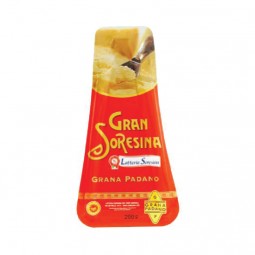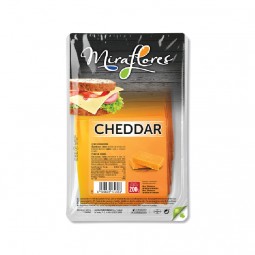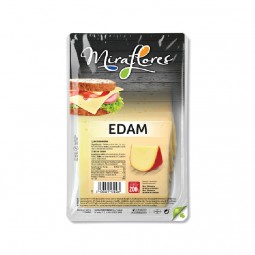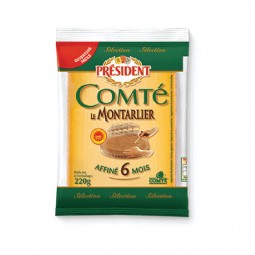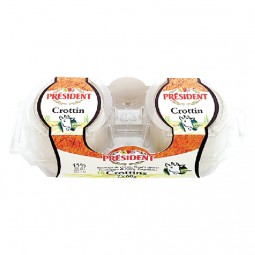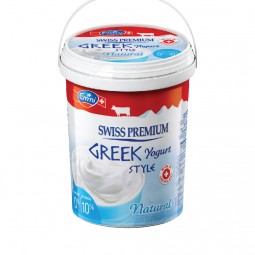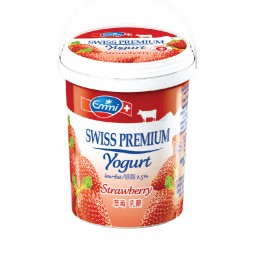SALTED BUTTER ROLL FRZ (250G) - PAMPLIE
Pamplie - Frozen Salted Butter Roll (250g)
- -44%
- -44%
Grana Padano (200G) - Latteria Soresina
The famous Grana Padano Cheese is a sophisticated high quality cheese, characterized by a perfect grain structure and the particular straw yellow colour with a fragrant aroma, a delicate taste but nourishing at the same time.
Cheddar Slices (200G) - Miraflores
Cheddar is a natural cheese, their texture is relatively hard, salty taste, ivory white or orange if some additives such as dye are added. This type of cheese is popular in the UK, accounting for 51% of the country's total annual cheese consumption. Cheddar cheese is the second most popular cheese in the United States, after mozzarella cheese, and is also the most consumed cheese in the world.
Edam Slices (200G) - Miraflores
With modern production process and high quality ingredients, Miraflores Emmental Cheese will surely make you satisfied with its quality as well as great taste when enjoying.
Emmental Slices (200G) - Miraflores
With modern production process and high quality ingredients, Miraflores Emmental Cheese will surely make you satisfied with its quality as well as great taste when enjoying.
3 Cheeses Shredded Special Pizza (200G) - Miraflores
Grated full fat Mozzarella soft cheese, Edam medium fat hard cheese, Gouda medium fat hard cheese, mild Cheddar cheese and Emmental medium fat hard cheese.
Swiss Greek Yogurt Blueberry Premium 2% Fat (150G) - Emmi
Emmi Swiss Premium Greek Style Yoghurt is very creamy, and with live lactic cultures. Natural plain with 10-Percent proteins, 0-Percent fat.
Swiss Greek Yogurt Strawberry Premium 2% Fat (150G) - Emmi
Emmi Swiss Premium Greek Style Yoghurt is very creamy, and with live lactic cultures. Natural plain with 10-Percent proteins, 0-Percent fat.
Swiss Greek Yogurt Peach Premium 2% Fat (150G) - Emmi
Emmi Swiss Premium Greek Style Yoghurt is very creamy, and with live lactic cultures. Natural plain with 10-Percent proteins, 0-Percent fat.
Strawberry Yoghurt (100g) - Emmi| Exp18/12/2024
Emmi Yoghurt is very creamy, and with live lactic cultures. Natural plain with 10-Percent proteins, 0-Percent fat.
- -50%
- -50%
Blueberry Yoghurt (100G) - Emmi
Emmi Yoghurt is very creamy, and with live lactic cultures. Natural plain with 10-Percent proteins, 0-Percent fat.
Raspberry Yoghurt (100g) - Emmi| Exp11/12/2024
Emmi Yoghurt is very creamy, and with live lactic cultures. Natural plain with 10-Percent proteins, 0-Percent fat.
- -83%
- -83%
Aloe Vera Yoghurt (100g) - Emmi| Exp18/12/2024
Emmi Yoghurt is very creamy, and with live lactic cultures. Natural plain with 10-Percent proteins, 0-Percent fat.
- -50%
- -50%
Natural Low Fat Yoghurt (100g) - Emmi
Emmi Yoghurt is very creamy, and with live lactic cultures. Natural plain with 10-Percent proteins, 0-Percent fat.
Swiss Milk Premium 3.5% Fat (250Ml) - Emmi
100% pure and natural fresh Swiss milk
Swiss Greek Yoghurt Nature Premium 0% Fat (1kg) - Emmi
Emmi Swiss Premium Greek Style Yoghurt is very creamy, and with live lactic cultures. Natural plain with 10-Percent proteins, 0-Percent fat.
Natural Plain Yoghurt Low Fat 1.5% (1Kg) - Emmi
Emmi Yoghurt is very creamy, and with live lactic cultures. Natural plain with 10-Percent proteins, 0-Percent fat.
Strawberry Yoghurt (1Kg) - Emmi
Emmi Yoghurt is very creamy, and with live lactic cultures. Natural plain with 10-Percent proteins, 0-Percent fat.



